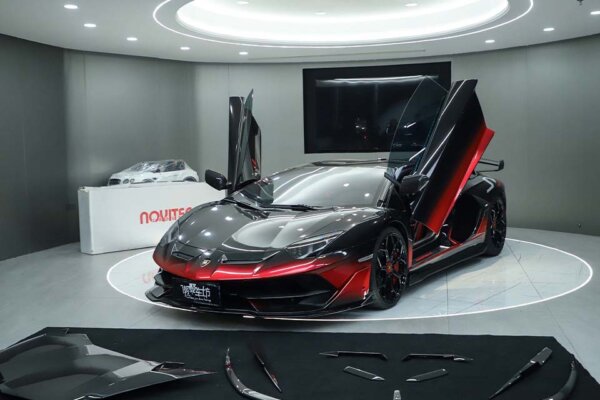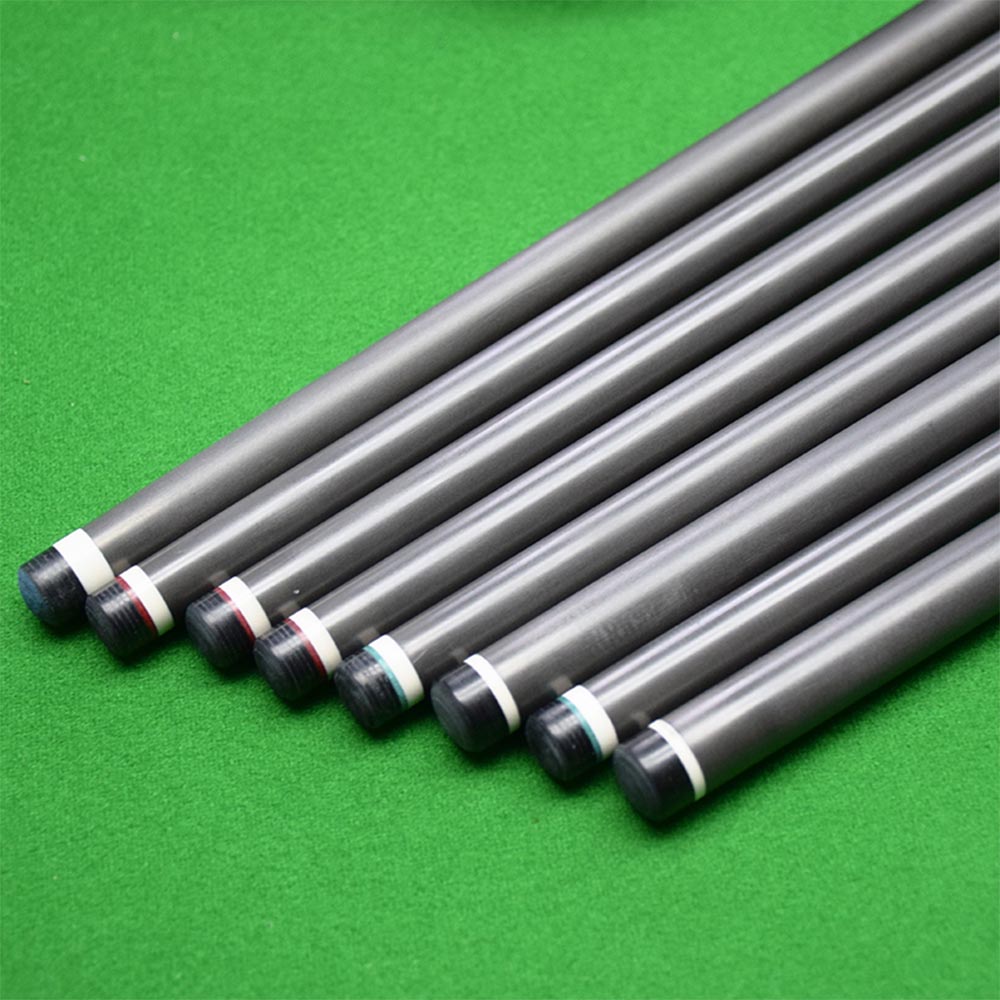
How Much Does Carbon Fiber Really Cost for Your Car?
Most real carbon fibre body panels kosten $400–$2,000 each, bonnets/hoods laufen. $800–$3,500+, roof panels $1,200–$5,000+, Räder $3,000–$10,000/setund ein Vollkohlefaser-Karosserie oder Monocoque-Fahrwerk can stretch from $30,000 Zu $150,000+. The spread comes from prepreg quality, Autoklavenhärtung, tooling/CNC, labour, Und brand/OEM tolerances.
The Real Cost of Carbon Fiber: Beyond the Price Tag
So, you’re dreaming of that carbon fiber hood for your project car, or maybe just a set of mirror caps to add a touch of motorsport flair. But then you see the price tag, and one question hits you: ‘What am I actually paying for?’
The answer isn’t just in the material itself, but in a journey of aerospace engineering, painstaking craftsmanship, and raw performance obsession. Let’s break down the real costs, so you can invest wisely.

Why Carbon Fiber Isn’t “Just Plastic”
You’ve seen it on Formula One (F1) cars, in McLaren Automobilbau’s MonoCell, on a Lamborghini forged composite wing, or the roof of a BMW M3 E92. Real Kohlefaser—the signature material of every true Hersteller von Kohlefaserverbundwerkstoffen—is a composite made of thousands of carbon filaments woven into fabric and cured in a Harzmatrix.
The payoff is an unbeatable stiffness-to-weight ratio, dramatic Gewichtsreduktion, and improved aerodynamic downforce.
The Upside: Unmatched weight savings, extreme rigidity, superior crash absorption, and design flexibility. The Reality: High initial price, specialist repairs, and need for UV-stable clear coats to prevent yellowing.
Quick Cost Table
| Komponente | Typical Price (USD) | Hinweise |
|---|---|---|
| Spiegelabdeckungen | 150–500 | carbon fibre mirror covers cost; small aesthetic mods |
| Front lip / diffuser | 400–2,000 | carbon fibre diffuser cost car; front splitter |
| Seitenschweller | 400–1,600 | carbon fibre side skirts cost; exterior body panel |
| Rear wing / spoiler | 600–3,000 | carbon fibre wing cost for car; spoiler assembly |
| Bonnet / hood | 800–3,500+ | carbon fibre bonnet cost; hood car cost UK; replacement |
| Dachpaneel | 1,200–5,000+ | carbon fibre roof panel cost; roof conversion cost |
| Doors / bumpers | 1,200–4,500 | carbon fibre car door cost upgrade; bumper |
| Wheels (set) | 3,000–10,000 | carbon fibre wheels cost car; wheel rims |
| Komplettes Bodykit | 5,000–20,000+ | carbon fibre kit cost car; body kit UK prices; fitment cost UK |
| Full body panels | 30,000–80,000+ | carbon fibre composite car body cost |
| Monocoque chassis | 60,000–150,000+ | carbon fibre monocoque cost car; race series |
Anmerkung: Für UK buyers, add import tariffs, Versand, Und VAT (imported carbon fibre car parts cost UK; carbon fibre car part shipping cost; kit fitment cost UK). US/EU prices are similar, with higher OEM premiums for Porsche 911, Audi RS3 8Y, Und Mercedes-Benz SLR McLaren.
What Really Drives the Price
1) Raw Materials — The Core Ingredient
Let’s start with the core ingredient: the carbon fabric itself. While you can buy DIY rolls online, the real performance comes from Prepreg—fabrics pre-impregnated with resin by giants like Toray oder Gurit. Think of prepreg as the ‘gourmet ingredient’ that guarantees consistency and strength, but comes at a premium price (prepreg carbon fibre car part cost; carbon fibre cost per kg car part).
- 3K-Twillgewebe: $25–$40/m²
- Forged composite or unidirectional (UD): $80–$200/m²
- Used widely in Lamborghini, McLaren, Und benutzerdefinierte Kohlefaser Herstellung.
2) Manufacturing Process — Where the Magic Happens
- Wet Layup: Budget-friendly but resin-heavy and inconsistent.
- Vakuumverpackung: Stronger and lighter—typical in mid-tier aftermarket.
- Autoklavenhärtung: The gold standard, used by OEMs and our Auftragswerk für Verbundwerkstoffe. High temperature and pressure ensure void-free strength, explaining the autoclave carbon fibre car body cost.
3) Tooling, CNC, and Hidden Precision
Before curing, each prepreg layer is hand-laid in moulds designed with CNC machining accuracy. Suppliers like Carbo Tech, Dallara Automobili, Und Lotus Sport rely on ISO 9001 standards—similar to our in-house Hersteller von Kohlefaserverbundwerkstoffen workflow.
4) Design Complexity & Finish
A flat sheet is easy. A curved vented hood with internal bracing? That’s costly. Premium finishes prevent the dreaded “carbon fibre look yellowish” issue.
5) Brand, Certification & Distribution
OEM brands (e.g., McLaren, Porsche, Aston Martin, Lamborghini) follow FIA-grade standards. Aftermarket producers (like CT Carbon, Reverie Ltd, Und Eurospares) offer savings but demand careful fitment checks.

DIY vs OEM vs Aftermarket
DIY (Proceed Carefully)
A “$500 DIY carbon fibre hood” often ends up costing double once you buy:
- Vacuum pump/bags: $300+
- Mould: $200–$1,000
- Prepreg or epoxy: $400+ Without experience or a clean environment, you’ll get resin-rich, schwer, oder wellig Teile.
OEM (Factory Grade)
Examples:
- BMW M Performance carbon roof for M3 E92: $3,000–$5,000
- McLaren 12C panels or Porsche 911 GT3 aero parts Guaranteed fit, tested durability, and high resale value.
Aftermarket (Smart Savings)
Marken wie CT Carbon oder Reverie Ltd deliver solid results at half the OEM cost—as long as the process is true prepreg autoclave. Great for aesthetic upgrades on Autos aus Kohlefaser or custom builds.
Material Comparison Table
| Besonderheit | Kohlefasern | Aluminium | Stahl | Fiberglas |
|---|---|---|---|---|
| Gewicht | Lightest (best weight reduction) | Licht | Schwer | Medium |
| Strength/Stiffness | Extremely high | Hoch | Sehr hoch | Mäßig |
| Reparierbarkeit | Schwierig | Einfach | Einfach | Mäßig |
| Kosten | Hoch | Medium | Niedrig | Niedrig |
| Visual appeal | Premium weave | Metallic | Industriell | Paintable |
| Use case | Performance, racing | Massenproduktion | Struktur | Budget-Builds |
ROI: In racing and high-performance use, Kohlefaser wins. For daily driving, aluminium or fiberglass may suffice.
Is Carbon Fiber Worth It for Your Car?
- Track Cars: Absolutely. Every kilogram counts.
- Supercars/Luxury Sedans: Yes — keeps value, enhances character.
- Daily Drivers: Probably not — opt for Spiegelabdeckungen, Innenverkleidung, oder steering wheel accents.
Repair & Maintenance
- Repair costs: $400–$2,000 depending on crack type.
- Yellowing prevention: UV-stable clear coat and regular detailing.
- Wrap vs Real: carbon fibre wrap vs genuine cost — wraps are 1/10 the price but purely aesthetic.
The Brands That Define the Market
- The Benchmark Setters: McLaren (MonoCell), Lamborghini (forged composites), Porsche, Und Aston Martin. You’re paying for peak R&D and performance.
- Engineering Partners: Carbo Tech, Gurit, Dallara Automobili – the hidden masters behind many race and supercar chassis.
- Quality Aftermarket: CT Carbon, Reverie Ltd – offering proven performance at a more accessible price point.
FAQs
How much does carbon fibre cost per kg for car parts? Raw fibre: $12–$25/kg, prepreg: $80–$120/kg, finished parts: $400–$1,000/kg.
Why is a carbon fibre bonnet more expensive than aluminium? Because of Prepreg-Material, autoclave energy, CNC tooling, Und hand layup labour.
What’s the OEM vs aftermarket price gap? OEM is typically 1.5–3× more, but guarantees fitment and warranty.
Is forged composite cheaper? Yes, up to 40% cheaper to mass-produce, but less fibre alignment and gloss uniformity.
UK fitment & shipping costs? Expect to add import tariffs, insurance, Und VAT.
Sources, Review & Author
Based on verified pricing from Toray, Gurit, Carbo Tech, and in-house production data from our Auftragswerk für Verbundwerkstoffe. Technical review by composite engineers, updated Nov 2025.
Disclaimer: Prices vary by material grade, region, and certification standards.


